Derwent Valley Mills: The Derwent Valley is situated in Derbyshire, Great Britain. The Derwent Valley is one of the key sites in the Industrial Revolution. The UNESCO World Heritage Derwent Valley Mills covers an area of more than 12 km² and spans a 24 km stretch of the Derwent Valley from Matlock Bath to the city of Derby. The Derwent Valley contains a number of cotton mills from the 18th and 19th centuries. The Derwent Valley is an industrial landscape of historical and technological interest. The Cromford Mill was the first water powered cotton spinning mill in the world, developed by Richard Arkwright in 1771. The Masson Mills are the finest surviving and best preserved example of an Arkwright cotton mill. The Masson Mills were founded in 1783, it is now a working textile museum. The Masson Mills were built as the showpiece mills of Richard Arkwright. The Belper North Mill is one of the oldest iron framed 'fire-proof' industrial buildings in the world. Some of the UNESCO World Heritage monuments in the Derwent Valley: Cromford Mill, Masson Mills, Belper North Mill, Long Mill of Darley Abbey, the silk mill in Derby, Cromford Canal, the Leawood Pumphouse, the castle built by Richard Arkwright, a steam railroad and the workers houses. The Derwent Valley Mills were declared a UNESCO World Heritage in 2001. World Heritage Art: Derwent Valley Mills
www.werelderfgoedfotos.nl © Copyright World Heritage Photos
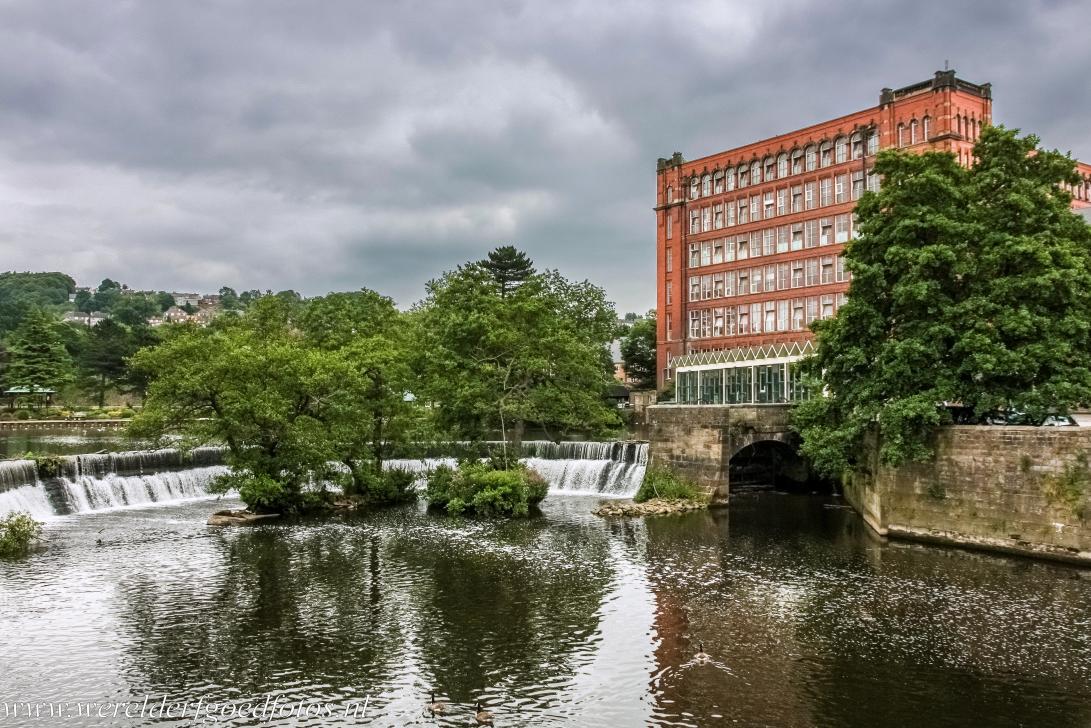
The North Mill in Belper is one of the mills in the Derwent Valley in England. The valley contains a number of cotton factories dating from the 18th and 19th centuries, the cotton factories were founded by the inventor and entrepreneur Richard Arkwright. The Derwent Valley Mills gained the status as a UNESCO World Heritage in 2001.

The North Mill in Belper is one of the mills in the Derwent Valley in England. The valley contains a number of cotton factories dating from the 18th and 19th centuries, the cotton factories were founded by the inventor and entrepreneur Richard Arkwright. The Derwent Valley Mills gained the status as a UNESCO World Heritage in 2001.
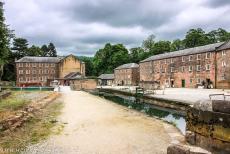
The Cromford Mill in the Derwent Valley is a location of historical importance, Richard Arkwright began a new system of cotton manufacture, called the factory system. He invented a successful cotton/spinning machine called the Water Frame for the mass production of cotton thread. This influenced all other industries.
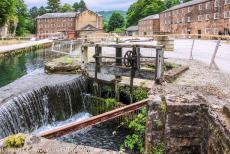
Derwent Valley Mills: The Cromford Mill was the first water-powered cotton spinning mill in the world, developed by Richard Arkwright in 1771. It is claimed that the noise of the machinery at Cromford Mill was so loud, that people could hear the noise almost five kilometres away. The cotton factory was finally closed down in the 19th century.
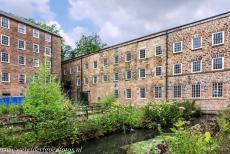
Derwent Valley Mills: The oldest part of the Cromford Mill. The mill was the first cotton-spinning mill developed by Richard Arkwright in 1771. The Cromford Mill was the first cotton factory built in the Derwent Valley. The Cromford Mill was also the first water-powered cotton-spinning mill. The mill is situated in the historic village of Cromford in Derbyshire, England.
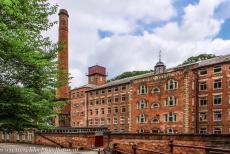
Derwent Valley Mills: The Masson Mills is the finest surviving and best preserved example of an Arkwright cotton factory. The mill was founded in 1783 and it became the showpiece of Richard Arkwright. The huge chimney was built in 1900 and is nearly 55 metres high. Nowadays, the mill houses a restaurant, a working textile museum and Masson Mills Shopping Village.
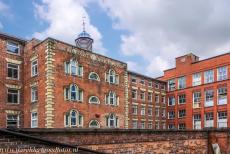
Derwent Valley Mills: Masson Mills houses a collection of historic textile machinery dating from the 18th, 19th and 20th centuries, such a carding engine and cotton doubling machines. Masson Mills is well preserved and in working condition. The mill is nowadays a working textile museum. The mills is situated on the west bank of the river Derwent in the English village of Matlock Bath.
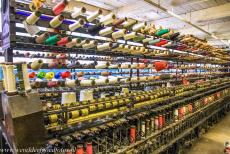
Derwent Valley Mills: A ring-spinning machine in the Doubling Room of Masson Mills, one of the Derwent Valley Mills. Ring-spinning is one of the oldest machining processes of spinning fibres, such as cotton, to make a yarn. The machine was constructed in 1922. Now, the Masson Mills is a working textile museum. The Derwent Valley Mills were declared a UNESCO World Heritage.
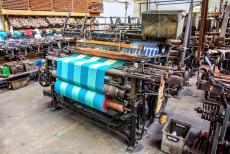
Derwent Valley Mills: Looms weaving traditional cloth in the Weaving Room of the Masson Mills, now the Masson Mills Working Textile Museum. The museum collections includes some of the oldest working looms in the world, still weaving cloth in the traditional way. In the 18th century, the factory system made it possible to produce cheap textiles and clothing.
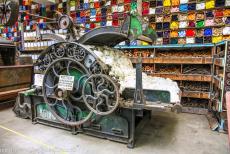
A carding engine in the Masson Mills, the carding engine was invented by Lewis Paul in 1748 and Richard Arkwrigh made several improvements to the engine in 1775. The Masson Mills is one of the Derwent Valley Mills. Today, the cotton factory is the Masson Mills Working Textile Museum. The Derwent Valley Mills was inscribed on the UNESCO World Heritage List in 2001.
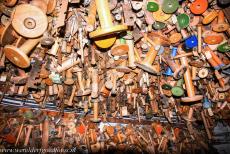
The bobbin room of Masson Mills houses the largest collection of bobbins in the world. There are estimated to be over 680.000 bobbins. The oldest bobbin dates back to 1795. The bobbins were used to wind the cotton threads. The Masson Mills is part of the UNESCO World Heritage Site: Derwent Valley Mills.
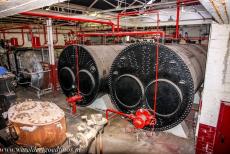
Derwent Valley Mills: The boiler house of Masson Mills became operational in 1908. The two huge coal-fired boilers (on the right hand side) produced the steam to drive the steam engines of the cotton mill. In the 1950s, the coal-fired boilers were replaced by the new oil-fired boilers (on the left hand side). The coal-fired boilers were converted into oil-fired boilers.
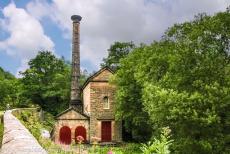
Derwent Valley Mills: The Leawood Pumphouse became operational in 1849, it is still in working condition. The pumphouse was built to pump water from the Derwent River into the Cromford Canal that runs along thr Cromford Mill. The Leawood Pumphouse is also known as High Peak Pumphouse, it is located near High Peak Junction. It worked continuously from 1849 until 1944.
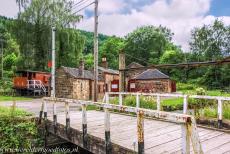
Derwent Valley Mills: The Cromford and High Peak Railway, workshops and offices at High Peak Junction, the original southern terminus, before the extension of the line to the Derwent Valley Line. The Cromford and High Peak Railway is one of the first steam railroads in the world, it was completed in 1831 to carry goods between the Cromford Canal and Peak Forest Canal.
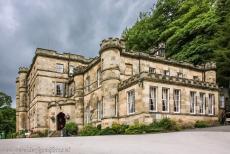
Derwent Valley Mills: Willersley Castle was built for Richard Arkwright, the founder of the cotton mills in the Derwent Valley. The construction of the castle started in 1790. Sir Richard Arkwright died in 1792, before the completion of the castle. His son, also named Richard Arkwright, moved into the castle in 1796. Nowadays, Willersley Castle is a hotel.
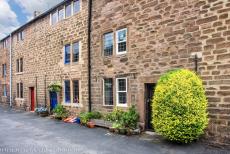
A row of weavers houses in North Street, Cromford. The houses were built by Richard Arkwright in 1777 -1776. He was one of the first manufacturers to build houses for his workers. The large windows provided light to enable weaving to take place at home, this work was mostly done by children and women. The weavers houses in Cromford are part of the UNESCO World Heritage: Derwent Valley Mills.
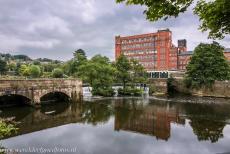
The Belper North Mill is one of the Derwent Valley Mills. The original mill was founded in 1786, destroyed by fire in 1803, rebuilt in 1804. The Belper North Mill is one of the oldest iron framed 'fire-proof' industrial buildings in the world and is considered the most beautiful technologically advanced building of its time, it is one of the last surviving water-powered cotton spinning mills in the world. The Belper North Mill is also known as the Srtutt's North Mill.
